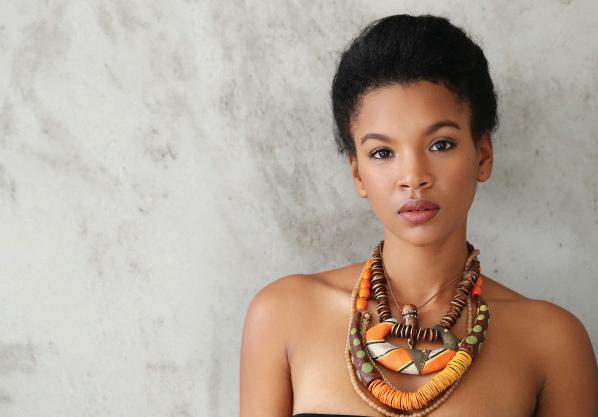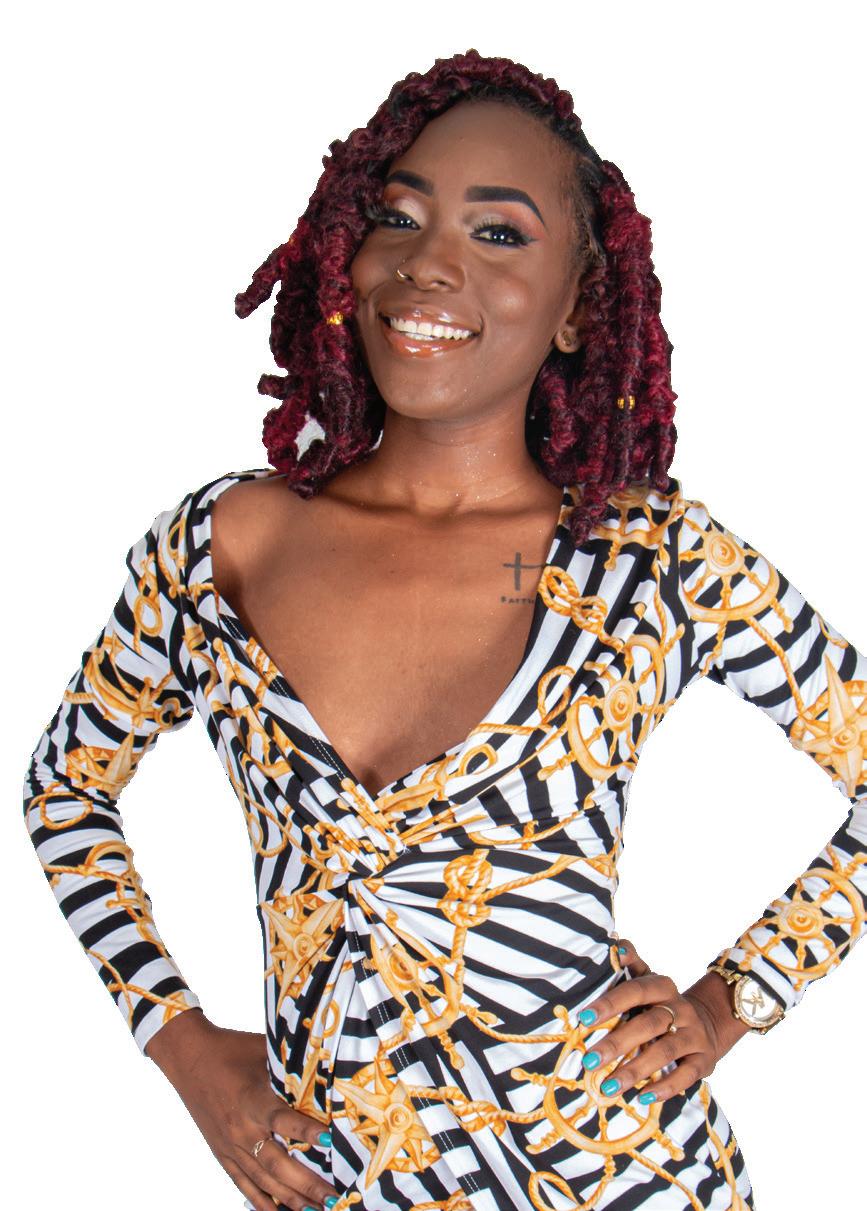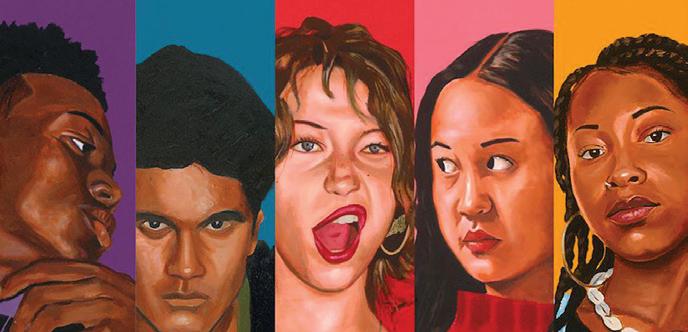
11 minute read
The Evolution of Fashion in the Caribbean
Fashion can often be perceived as expressive, and creative. You wear what speaks to you, and sometimes you wear what’s expected.
A look back at how our mothers and grandmothers used to dress is a huge contrast for Caribbean attire today. Caribbean fashion has been influenced by
Advertisement
African, Indian, European, Amerindian and Asian traditions. Over time, as the years of technology have evolved and new and old designers coexist, the style of fashion has changed into what we wear today. Still, we can appreciate how different yet ironically similar
Caribbean fashion was back then.
In the late 1930s and 1940s, suspenders were popular among young men and boys. This was during a time where belts were not a trend, or perhaps had not come into play yet. Men wore suspenders to hold up their pants and even today, suspenders are relatively popular with both men and women. Back in the 1940s and 1950s, women’s attire were simple, practical and used little fabric. The dresses were often A-line and conservative and the skirts were either knee length or calf length, both light and airy. The men wore suits inspired by African Americans, which were high waisted trousers with a long jacket in the 40s, while they added in fedora hats in the 50s.

Fashion was often influenced by the cinema/ television, as that was one of the places Caribbean people went to for entertainment. While the 40s and 50s fashion trends continued into the 60s and 70s, international influencers played a major part in that era.
The 1960s saw sheath dresses and boxier cuts with hairstyles such as the beehive and bobs. Jumpers and cardigans were prominent with the introduction of knitting by Caribbean women and by the end of the 60s, fashion was less conservative. Women wore tight pants and shorts skirts.
The 70s were a period for the American Civil Rights, Disco culture, Rastafarian culture and Reggae music, all of which influenced Caribbean fashion. Men wore bell bottoms and open shirts while women sported midriff tops and patterned scarves. The 70s were also the era for afros, which tied in with the Disco culture.
The 80s and 90s saw loose fitted clothes and jheri curls. Influencers such as Jamaican singer and actress Grace Jones served the 80s with her massive contribution to fashion as she donned her unique style and geometric hair. Bright makeup, jewelry and shoulder pads were also on trend in the 80s. In the 90s, trends such as baggy clothes, high waisted trousers, round glasses and pan-African prints were popular. Caribbean people were by then, actively spending more money on their hair and clothes, following trends and staying in the loop.
By the 2000s, Caribbean culture and fashion became a worldwide trend. Fashion statements like midriff tops or crop tops became popular once again and men wore vests and embellished belts. Caribbean artists such as Rihanna and Sean Paul were helpful in shining the spotlight on Caribbean fashion. Fashion was then less conservative as women began showing off more skin.
Now in 2020, we appreciate the fashion trends that we welcome back into Caribbean culture and how they fit in so well with the fashion world today.
ADVERTISE WITH US
To advertise in The Dazzle Magazine, contact our sales agent via telephone (758) 484 4642 or email advertising@dazzlethemag.com for more information.

KishaJOSEPH Musical Vibes With Kisha
Whether you love soca music or you just simply listen to it, there are certain artists that you’ve more than likely paid attention to. Kisha Joseph, a young soca artiste who is known for songs such as “The People Man” and “Cool Out.” An alumna of Ave Maria, Corinth Secondary and then Sir Arthur Lewis, Kisha began her music career while she was still a student. She sat down with Dazzle Magazine and gave us a look into her life as an artiste.
“I’ve been in the industry about four years now,” Kisha shared with us. “I began singing while in Secondary school. I took part in song writing and soca competitions, but my first competition was actually a calypso competition where I came in second.”
fun facts

Favorite artiste - Destra
How old were you when you knew that you wanted to become a soca artiste? - Around 7 years old
Favorite hang out spot - The beach
“I remember we had this mathematics song competition at school,” Kisha went on to say.”Fay-Ann Lions from Trinidad, one of the biggest soca artistes in the industry sent me a beat to use after I messaged her. I was thankful that she even responded. I wrote the entire song, performed it and I won.”
Kisha recalled her first time recording professionally in 2014 with a song called “Fire Waist”. “I started off with Fire Waist and the following year, I did my first groovy song called “D’ Vibe”. I think that that song actually created a buzz for me because back then, people didn’t know who Sweet Kay was.” Which is what she was previously known as on stage.
In 2016, Kisha took part in her first ever groovy soca competition and became the youngest artiste at the time to make it to the finals. “I think I was around 16 then. When I entered the competition I went in with a mindset that said, I’m not going in to win. I’m going in to do my best and gain experience.” She explained. “I was proud of myself for doing it. I didn’t expect the crowd to support me the way they did but I was proud.”
Kisha spoke about how winning that first mathematics song competition at school, boosted her confidence enough to continue singing. “I always envisioned myself being on the big stage. At a young age, I would watch the soca monarch competitions on TV and I used to say to myself, 'I want to be there, among those big guns on stage' but I didn’t have the connections at the time.” Her drive, or her hunger as she called it, pushed her towards seizing her big opportunity. “I think I was hungry for it so I started reaching out and looking for links in different places to make things happen for me.”
While she spoke about her confidence and determination to make things happen for herself, we were curious as to how the transformation from Sweet Kay to Kisha Kay came about. “I think with age comes maturity,” she explained. “I thought the name was a little too childish or juvenile so I wanted to rebrand, and I did that in 2016.”
“I think it was Shemmy J who told me about Takeover Tent,” Kisha added when we asked her about her encouragement to join a tent and enter competitions. “At the time, in order to compete in any national event, you had to be with a tent. He told me about it, encouraged me and both of us joined.”
Despite not placing in her first 2016 competition finals, Kisha went on to acquire third runner up in the 2018 groovy soca monarch. “I think 2018 was my best year. That’s the year I came out with “The People Man” and it was very successful for me. I even won Soca Switch that year and I was able to travel to different counties to perform such as Miami, Barbados and St. Vincent.”
For her 2018 groovy soca finals, Kisha sang “Vaval Vibes” produced by De Red Boyz out of Barbados. “I got the link from my Uncle and I was excited to www.dazzlethemag.com DAZZLE
work with them because they were one of the biggest production companies, working with artistes such as Patrice Roberts and Destra.” Kisha told us. “I knew in order to record with them, I needed to be in Barbados so I was excited to be in a studio where some of my idols recorded.”
We asked Kisha about her work ethic. “Normally when producers send me riddims, I have to listen to them on a loudspeaker so I can actually feel the vibes. I’m particular when it comes to riddims because I’m a very hyped artiste so the riddim has to fit me and my energy.” She shared. “Sometimes, it’s hard to write songs because you have to be in a good mental environment but normally I write at home in my room.”
When it comes to sharing music, Kisha explained that she uses her platforms efficiently to broadcast her music and her work relationships with djs in the industry. Staying current with her music and keeping up with the ever flowing trends is a difficult task, but Kisha has managed to stay on top for the past few years.
“I was still new in 2018, but people started to know who I was then and what I realized when it comes to music, people tend to navigate more towards the controversial content.” She added. “They want things that they could relate to and in order to stay relevant, I give them what they want.”
On the topic of controversy and spicy, Kisha’s song “TPM” made waves when it was released. “I got the idea from a friend. She was on a call and I heard her mention TPM and she told me that it meant The People Man so I told her I’d use it in a song. It’s relatable.”
We know Kisha as the soca artiste, but Kisha the young entrepreneur has a nice ring to it too. “Currently I don’t have anything happening apart from making music but I’m looking into opening my own small business,” she told us. “I’ve always seen myself doing or selling merchandise but ever since COVID-19, everything has been on a pause.”
“My biggest achievement to date has to be TPM reaching one million views,” Kisha said proudly when we inquired. “I hope to have something like that happen again but I’m proud of this one.”
When it comes to being a female artist in the music industry, we wanted to know how much pressure she felt, and how she dealt with it. “At times I do feel pressure,” Kisha admitted. “I always say to myself I want to do better than I did the year before. I always want to up my game and sometimes, the songs that I think will do good, don’t do as well as I hope. Sometimes I feel disappointed, but I try to better myself every time.”

“As a female artiste, it is very difficult because the industry is dominated by males. I believe a lot of females don’t want to come out because they’re scared of how people will perceive them. You have a lot to prove, with how you dress and what you sing so it’s a lot.”
Many young artistes like herself are up and coming in the industry and Kisha added in a few words of advice. “I believe that nobody should stop your vision. If you know that you want to be an artiste then go for it. Don’t make anyone hinder you. Have faith and believe in yourself.”
With parting words, Kisha hinted at new and upcoming changes in her music style. “This year will be a different year for Kisha Kay in a sense that people will be able to see a different side of me. I know people categorize me as a soca artist but this year I’ll be giving them something different in terms of genre. They’ll be hearing a lot more dancehall and reggae so look out for that.”
Dazzle Magazine wishes Kisha a successful 2021 and we hope to hear more from the promising artist in the future.
Grand Army

If you’ve spent 2020 like almost everyone else, which is working from home one second and binging Netflix shows the next, then you might have come across Grand Army.
Grand Army aired on Netflix in October and since then, we’ve seen the talented cast of young actors portray teenagers who’ve, at some point, had to overcome challenges both in school and at home.
The series is set in Brooklyn at a fictional High School called Grand Army. Set around the lives of five high school teenagers, the series explores subjects like race, sexuality, economic strains and the urge to belong.
We meet the characters individually; Joey Del Marco (Odessa A’zion), Jayson Jackson (Maliq Johnson), Dominique Pierre (Odley Jean), Siddhartha Pakam (Amir Bageria) and Leila Kwan Zimmer (Amalia Yoo). We meet them at different times in the first episode after the school is put on lockdown following a bombing and then their lives sync in various ways throughout the season.
Joey is the school’s free spirit who becomes a shell of herself after she’s dealt a heinous hand by the people she trusted the most. Jayson is a music lover, a saxophone prodigy and an active speaker against racism. Dominique is the one with too much on her plate and responsibilities no child should have to carry. She’s set on her goals, despite the economic and family based challenges she faces. Siddhartha “Sid” is a high school jock with secrets that threaten to derail his social life and that of his relationships with his family. Leila is the new kid at Grand Army and despite being of Chinese descent, she realizes she doesn’t fit in with the Chinese girls at her school. Struggling to fit in with her new peers, Leila becomes someone she doesn’t even recognize.


Five students, all with different woes and challenges but fighting equally as hard for something they desperately want. Grand Army is a mixture of Euphoria, Degrassi and 13 reasons Why; intense and fast paced but worth it if you love the drama.








